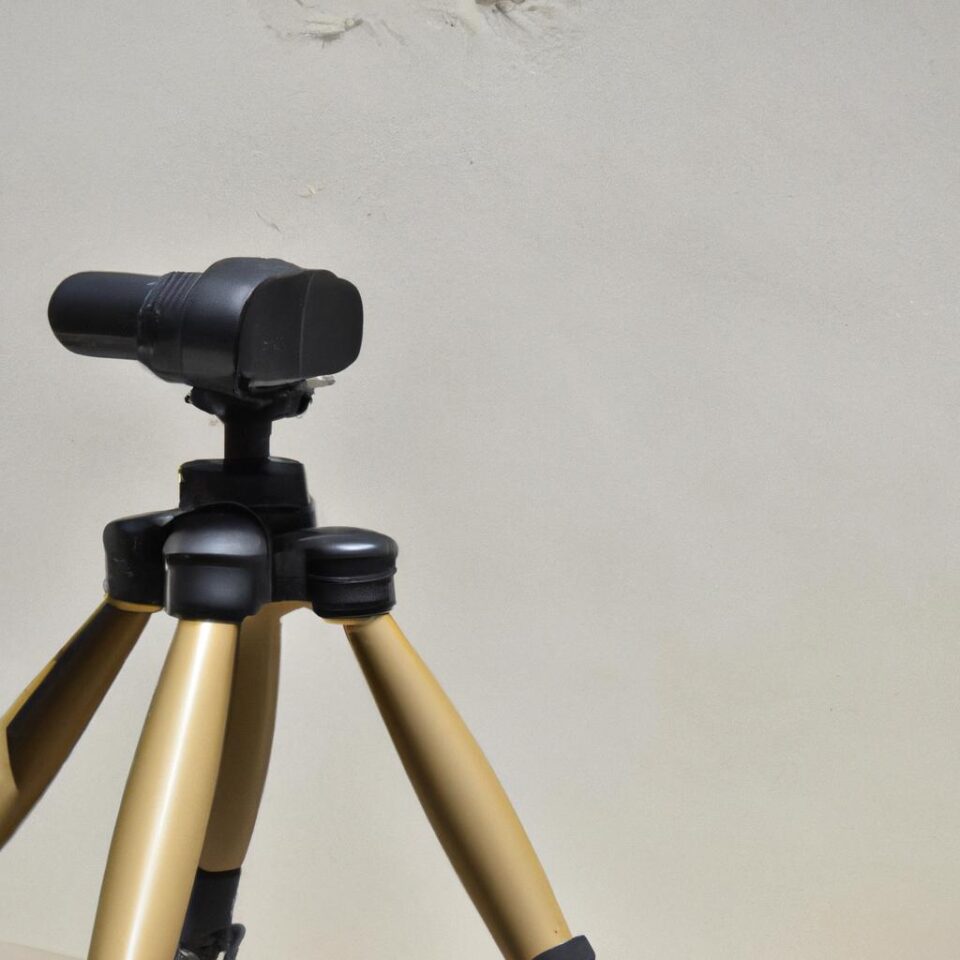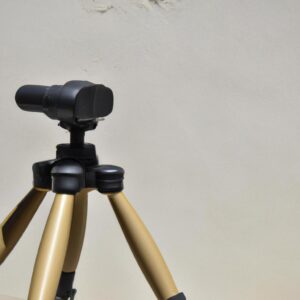Introduction to Tripods
Tripods are an essential piece of photography equipment for taking stunning and sharp photos. Tripods are used to stabilize your camera, allowing photographers to take clearer photos in low light situations and increase the sharpness of images, even while shooting with slow shutter speeds. All types of photographers from amateurs to professionals use tripods to capture their most beautiful shots.
For those that may not already have a tripod, selecting the right one can be tricky. This guide will help you identify which features you should be looking for when choosing a tripod as well as provide advice on setting up and mounting gear, different types of tripods, and considerations for quality and price. By the end of this guide, you will be confident in your ability to select the right tripod for your photography needs.
Identifying Your Needs
When selecting a tripod for your photography needs, it’s important to consider which features you need and which ones will matter depending on the type of photos you’re taking. There are several important factors you should be aware of when choosing the right tripod for your specific photography needs.
First and foremost, consider the size and weight of the tripod. If you plan on travelling with it, you’ll need to find one that is lightweight and portable. Larger and heavier tripods are better suited for studio and heavy-duty use, as they can better support heavier equipment. You should also consider the maximum height of the tripod, as this will determine how high you can set up your camera.
The head of the tripod can make or break your photography experience. Depending on the type of photography you do, you may require different head types, such as ball, pan, and tilt heads. You should also check the load capacity of the tripod to ensure that it can handle the weight of your gear. Lastly, check the legs of the tripod to see if they can be independently adjusted to varying heights, angles, and terrain.
By taking into account these key features, you can narrow down your options and select the tripod that’s right for you and your particular photography needs.
Setting up & Mounting Gear
Having the right tripod is essential for taking perfect photos, but it’s just as important to know how to set it up properly. This section will provide a step-by-step guide on how to mount different types of equipment such as DSLRs, phones, etc. onto a tripod.
Step One: Choosing the Right Adapter
First, you’ll need to choose the right adapter based on the type of equipment you’re using. For DSLRs, you’ll need an adapter that connects the camera to the tripod. For most digital cameras, this will come with the tripod when it’s purchased. However, if you are using a phone, you’ll need a special adapter for that.
Step Two: Attaching the Adapter to the Tripod
Once you have the correct adapter for your equipment, attach it to the top of the tripod. Most tripods have threaded holes at the top that are designed to accept the adapter. Once it’s secured in place, make sure to tighten it firmly to make sure it won’t come loose.
Step Three: Securing the Equipment to the Adapter
Next, attach your equipment to the adapter. Depending on what kind of equipment you are using, this could be done either by screwing the equipment in or simply sliding it into place. Make sure to check the instructions for your specific equipment or adapter to ensure you are doing it correctly.
Step Four: Leveling the Tripod
The last step is to make sure the tripod is level. To do this, use the adjustment knobs located at each leg of the tripod. By adjusting them, you can move the legs up and down so that the tripod is perfectly level.
Conclusion
Mounting your equipment to a tripod requires a few steps, but it’s definitely worth it if you want to take perfect photos. With the right adapter and a little patience, you’ll be able to securely mount any kind of equipment to a tripod in no time.
Tripod Types
When selecting the right tripod for your photography needs, it’s important to understand the differences between common types of tripods. The most popular options on the market are heavy duty, lightweight, table top, travel, and monopods.
Heavy duty tripods are ideal for large professional cameras or equipment with heavier lenses. They are designed to provide maximum stability for holding heavier payloads and often feature vibration dampening systems to ensure perfect exposure. Heavy duty tripods often come with interchangeable feet that can be switched out depending on the terrain.
Lightweight tripods are great for lighter cameras and lenses and are usually made from aluminum or carbon fiber. They’re much more portable and easier to transport than their heavier counterparts, which makes them the perfect choice for travelling. Although they tend to be less stable, they are still very useful for capturing sharp photos.
Table-top tripods are designed to fit on tables, chairs, and other surfaces. They are usually quite small and lightweight, making them ideal for taking photos in small spaces. They can also be used to mount video cameras or digital recorders, but do not offer as much support as larger, more robust tripods.
Travel tripods are designed for the photographer who is always on-the-go. They are lightweight and portable, but still provide decent stability. They can usually fold up into a compact form and come with a carrying case for easier transportation.
Monopods are typically used when only limited support is needed. They are great for long exposures, video recording, and selfies. Monopods are generally much lighter and more portable than traditional tripods and require less setup time.
Quality & Price Considerations
When it comes to tripods, quality and price go hand in hand. A higher quality tripod will be significantly more expensive, but it will also last longer and provide better stability for your photos. On the other hand, a cheaper tripod might not have as many features, or might not be as reliable – but it can still deliver good results if you’re careful.
Heavy duty tripods are usually more expensive than lighter weight ones, but they offer the best stability and can handle heavier cameras and lenses. Lightweight tripods tend to be more affordable, and they are good for travel and everyday use. Tabletop tripods are useful for very low angle shots, and they can often fit in small spaces. Travel tripods combine portability and decent stability in a compact package, but they usually don’t offer the same level of stability as a heavier tripod.
Monopods are a great alternative to tripods, offering similar stability in less space. They are often used by sports, wildlife, and action photographers who need to move quickly and take shots from unique angles.
In terms of price, a good quality tripod for DSLR cameras usually costs between $100 and $200. For mirrorless cameras, the range is between $80 and $125. If you’re looking for a budget tripod, you can find basic tripods for around $50. However, these tend to be fairly lightweight and not as stable as higher end models.
When to Upgrade
Upgrading your tripod may feel intimidating, especially if you’ve had your current one for a while. The decision of when to upgrade should be based on your photography needs, and whether your current tripod is meeting those needs. Generally speaking, if you’re finding yourself unable to handle certain tasks with your current tripod, or noticing that it doesn’t have the features you need for a certain type of shot, then it may be time to upgrade.
It’s important to keep in mind that tripods do not last forever, especially if they have been subjected to heavy usage or poor handling. If your tripod is beginning to show signs of wear and tear such as bent legs or loose screws, then it’s definitely time to get a new one. In addition, if you’re taking on more challenging and creative shooting projects, it may be worth investing in a higher quality tripod with more features and sturdier construction.
Finally, if you’re simply looking to add another tripod to your gear collection, and you’ve already identified the features and type of tripod to purchase, then it may be wise to upgrade right away to expand your options and increase your creative capabilities.
Conclusion
When it comes to selecting the right tripod for your photography needs, there are several factors to consider. You will want to determine the types of photos you plan on taking, what types of equipment you have, and how much you can afford to spend. While there are a variety of features and types of tripods available, understanding which ones you need is key.
Ultimately, the best way to find the right tripod is to understand your needs, do your research into different tripod types and prices, and test out a few models in person. If you take the time to consider these points, it will be much easier to select a tripod that will meet your photography needs.
Supporting Resources
When it comes to selecting the right tripod for your photography needs, there are a plethora of resources available online and offline to help you out. Whether you’re looking for unbiased reviews on different products, helpful tutorials, or further advice from experienced photographers, you can find all of this and more with a simple search. Here are some of the best resources to consider:
- Manufacturers’ websites: each manufacturer will have detailed information and specs about its respective tripods, giving you additional information to help in your selection process.
- Third-party review sites: websites such as Consumer Reports and CNET can offer unbiased reviews of different products so that you can get an honest opinion about a tripod before you buy.
- Photography and technology forums: you can join forums and ask questions and receive feedback from people who have first-hand experience with tripod models.
- Video Tutorials: YouTube has a wealth of tutorials that can show you how to properly set up and use different types of tripods, making it easier for beginners to pick up the basics and more advanced users to refine their skills.
With the right resources, you can easily find the right tripod for your photography needs. No matter what kind of photos you take or what type of equipment you use, these resources can help you make the best decision for your needs.
comments: 0

